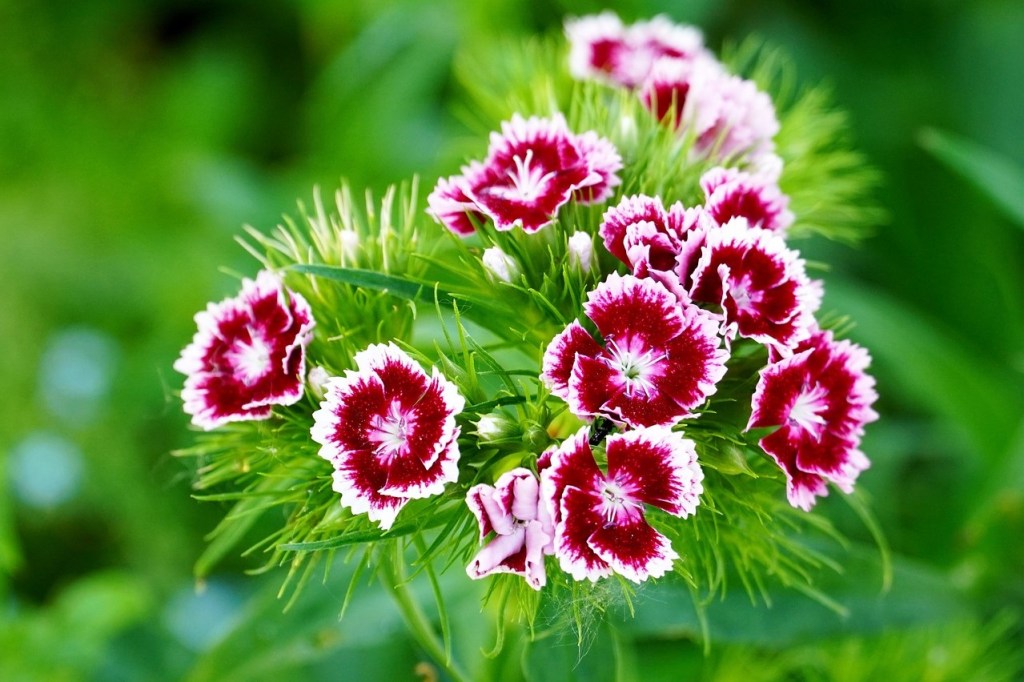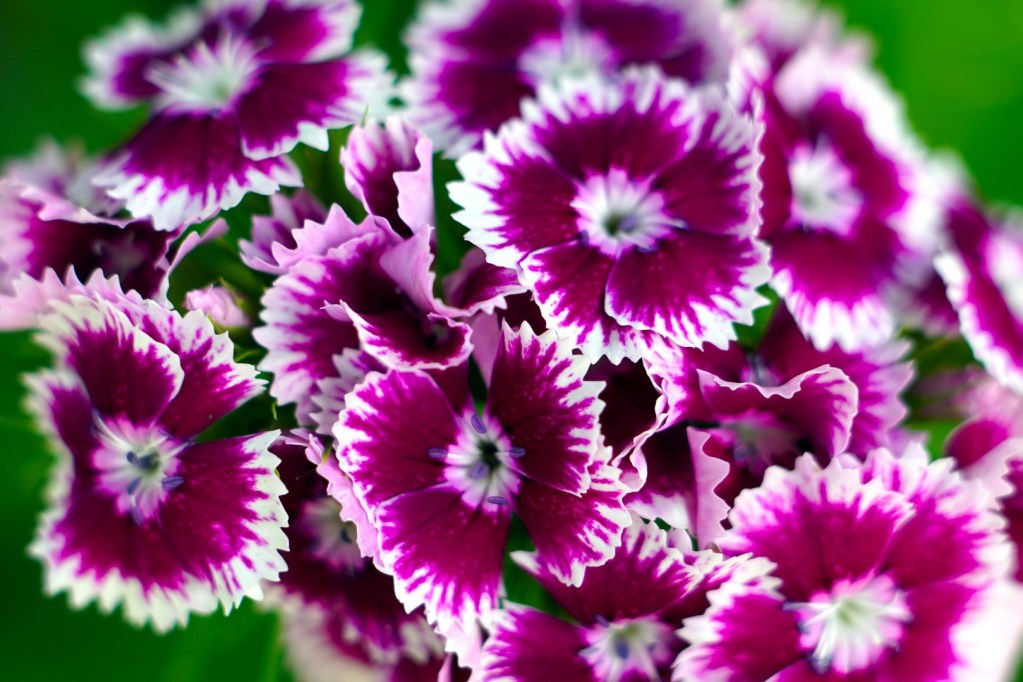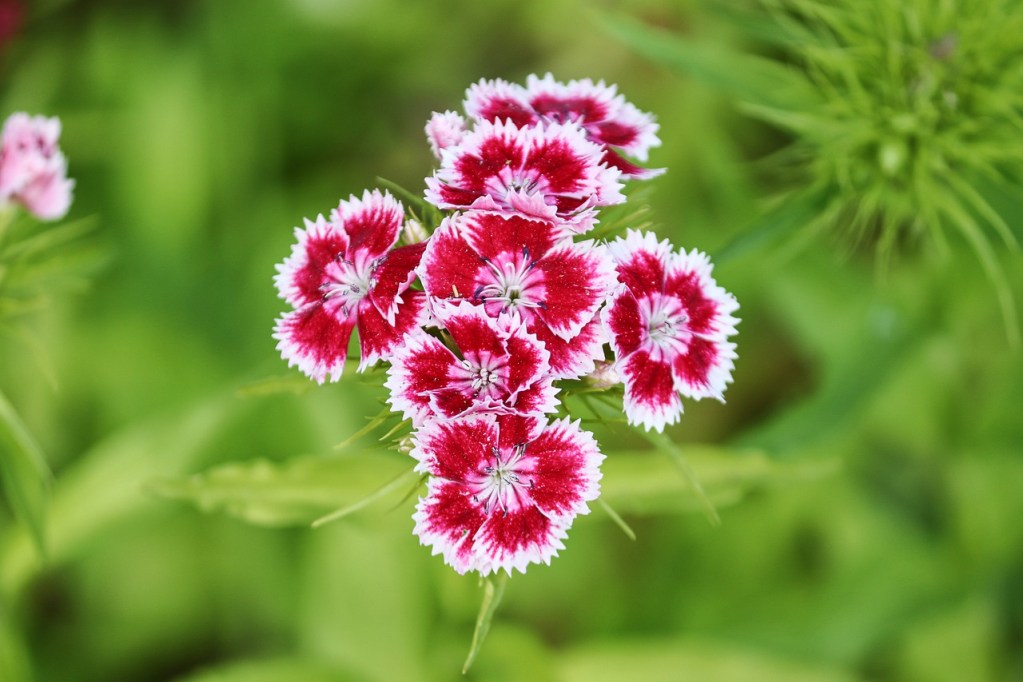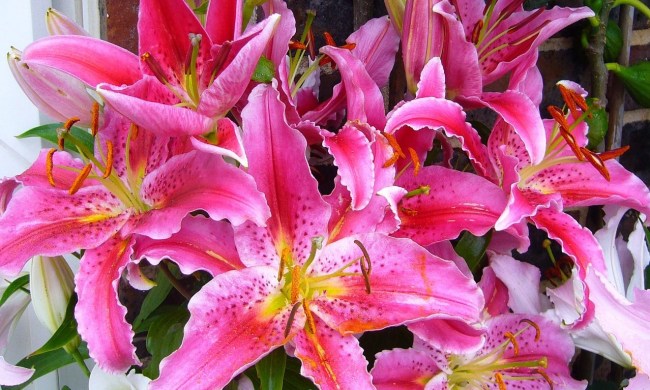
Dianthus, also called pinks, are beautiful flowers with unique shapes and scents. Although many dianthus flowers are the color pink, their name actually comes from the shape of their petals. People long ago thought the petals looked like they had been cut with pinking shears, which leave a zigzag pattern. When planning your summer garden, whether indoors or out, dianthus should be at the top of your list. These flowers are easy to grow, come in many fun varieties, and will fill your garden or home with color. Here’s everything you need to know about dianthus care in summer.

Dianthus varieties
Dianthus is a genus of plants that contains a multitude of flower species, which come in an array of colors and sizes. Some types of dianthus may already be familiar to you. For example, carnations are a type of dianthus, Dianthus caryophyllus to be specific. Sweet William (Dianthus barbatus) is another dianthus species commonly found in gardens.
One type of dianthus you might not know as well is Dianthus armeria, also known as Deptford pink or grass pink. This dianthus species has lovely flowers in various shades of pink, often with some light speckling. If you want something a little more unusual, then how about Dianthus superbus? As the name suggests, it’s quite superb. This dianthus species has wide petals with long fringes, making it look a bit like a jellyfish or star-nosed mole.

How and when to plant dianthus
Most dianthus species should be planted in the spring, although you can plant some perennial types in the fall. You can grow dianthus from seeds or nursery starts. Seeds can be planted at any time after the last frost of winter, but you can start them indoors six to eight weeks before the last frost.
With nursery starts, you can typically plant them as soon as they begin arriving in nurseries. After all, chances of frost have passed is the best time to plant them. You can plant mature versions at any time, but these are the best option for summer planting.
Whether you’re growing seeds or starts, plant your dianthus in full sun. They can tolerate some shade, with a few varieties being more tolerant than others. However, planting dianthus in the shade results in fewer flowers and a generally weaker plant. They are also more vulnerable to fungal infections.
Space your dianthus plants 6 to 12 inches apart, depending on the mature size of the dianthus you’re growing. Adding compost to the soil before planting can help improve both the nutrient balance and drainage of the soil. If you’re planting a nursery start or a mature plant, make sure the hole you dig is twice as wide as the root ball. Set the plant in the center and fill the soil in around it.

Dianthus care
In general, dianthus are low-maintenance plants, although there is some deviation from species to species. They are drought-tolerant plants, typically only needing water once a week. Some species may need even less. Dianthus care in summer mostly consists of deadheading any spent blooms and giving them extra water during heat waves or droughts. Water them beneath their leaves rather than from overhead, as overhead watering can cause or exacerbate mildew or rot.
Taller dianthus plants may need staking, as their stems tend to be thin and prone to flopping or breaking. In windy regions, providing a windbreak can also keep your tall dianthus plants upright. Mulch can be useful for keeping weeds at bay and improving the soil’s water retention. Bark and stone are good choices for dianthus plants. Keep the mulch a couple of inches away from the stems of the dianthus to maintain good airflow and prevent possible abrasions.

Common problems and solutions
Dianthus plants are resistant to many pests. In part, this is because they’re mildly toxic to animals. This typically keeps deer at bay, although some small insects will still eat them. However, it does pose a slight risk to any pets you have. Although it is unlikely to cause serious harm to your pets unless they ingest a large amount, it can cause an upset stomach. The sap from dianthus plants can also be a mild skin irritant.
The most common dianthus problems are due to overwatering and/or poor drainage. When left in wet soil for too long, it is prone to root rot, crown rot, and powdery mildew. Unfortunately, plants affected by crown rot often can’t be saved and need to be removed from the garden to prevent spread.
Mild cases of powdery mildew can be treated with fungicides. Mild cases of root rot may be treated by removing the plant, trimming the diseased roots, and replanting it in clean, dry soil. However, severe cases of both are often best treated by simply removing the infected plant.

Should you deadhead your dianthus?
Yes, you should deadhead your dianthus, especially during summer. While leaving spent blooms on your dianthus plant won’t harm your plant, deadheading offers a variety of benefits. It encourages your dianthus to keep blooming, keeps your garden looking fresh and neat, and stops your dianthus from reseeding. If you plan on continuing to grow dianthus in your garden and want your plants to reseed, then we suggest deadheading most of your dianthus blooms and only leaving a few to put out seeds. This helps control the amount of dianthus seeds going into your garden as well as gives you the additional blooms provided by deadheading — it’s a win-win.
Dianthus is a delightful and beautiful genus with gorgeous flowers. Whether you prefer the delicate Sweet William, the elegant carnations, or the unique Dianthus superbus, these flowers are a sight to behold in any garden. Take care not to overwater them, be sure they get plenty of sun, and keep them out of reach of any curious cats or dogs you may have. Your dianthus will reward you with tons of lovely flowers!



